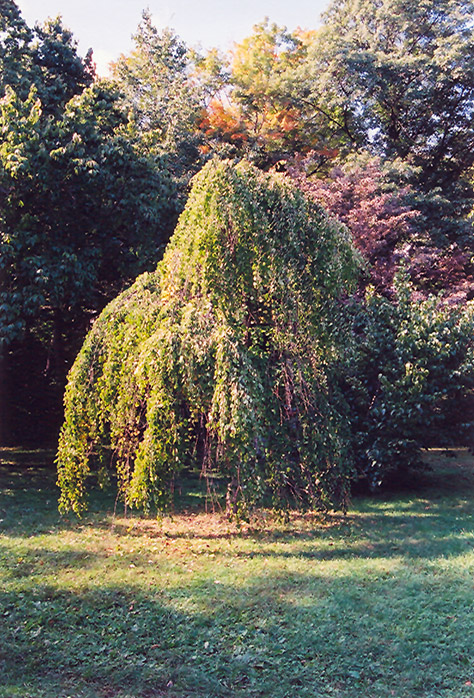>> Home
Morioka Weeping Katsura Tree
Cercidiphyllum japonicum 'Morioka Weeping'
Height: 50 feet
Spread: 40 feet
Sunlight:
![]()
Hardiness Zone: 4b
Description:
Without question one of the most beautiful of all weeping trees, with heart-shaped leaves cascading like rain from a tall tree; fantastic spring and fall foliage colors, fallen leaves emit a delicious caramel fragrance in autumn; the ultimate accent tree
Ornamental Features
Morioka Weeping Katsura Tree is primarily valued in the landscape for its highly ornamental weeping form. It has bluish-green deciduous foliage which emerges burgundy in spring. The heart-shaped leaves turn an outstanding orange in the fall. The shaggy brown bark adds an interesting dimension to the landscape.
Landscape Attributes
Morioka Weeping Katsura Tree is a deciduous tree with a rounded form and gracefully weeping branches. Its average texture blends into the landscape, but can be balanced by one or two finer or coarser trees or shrubs for an effective composition.
This is a relatively low maintenance tree, and is best pruned in late winter once the threat of extreme cold has passed. It has no significant negative characteristics.
Morioka Weeping Katsura Tree is recommended for the following landscape applications;
- Accent
- Shade
Planting & Growing
Morioka Weeping Katsura Tree will grow to be about 50 feet tall at maturity, with a spread of 40 feet. It has a low canopy with a typical clearance of 1 foot from the ground, and should not be planted underneath power lines. It grows at a fast rate, and under ideal conditions can be expected to live for 70 years or more.
This tree should only be grown in full sunlight. It prefers to grow in average to moist conditions, and shouldn't be allowed to dry out. It is particular about its soil conditions, with a strong preference for rich, acidic soils. It is somewhat tolerant of urban pollution, and will benefit from being planted in a relatively sheltered location. This is a selected variety of a species not originally from North America.
